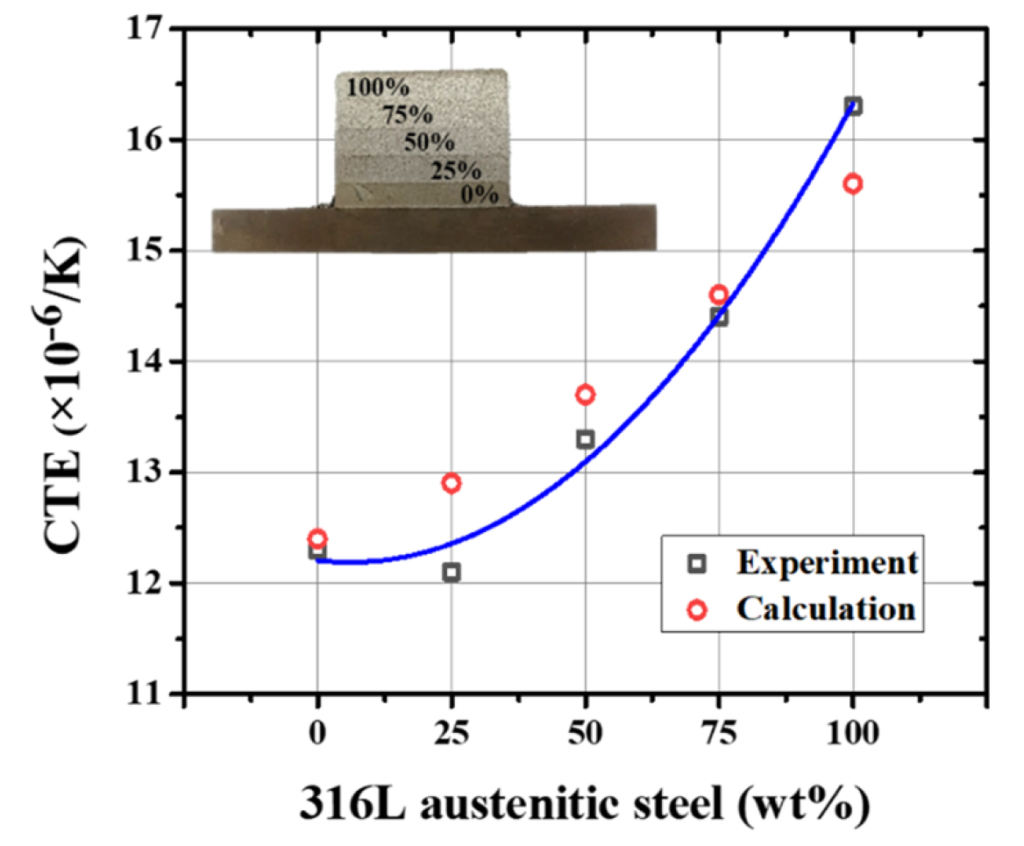Hill Engineering recently published new research with collaborators from around the world including South Korea, Australia, China, and the United Kingdom. The work is titled Multiscale framework for prediction of residual stress in additively manufactured functionally graded material. The abstract text is available here along with a link to the publication.
Additive manufacturing (AM) of functionally graded material (FGM) is of great interest for alleviating the abrupt material discontinuity and steep gradient of physical properties across the interface between dissimilar materials. This study proposes a multiscale framework based on the inherent strain method to accurately predict residual stress distribution in FGMs processed via AM using directed energy deposition (DED). First, mesoscale representative volume elements for different chemical compositions of austenitic and ferritic steels were modeled with actual process parameters and individual material properties to calculate the inherent strains. Subsequently, the corresponding inherent strains of each chemical composition were continuously mapped to a macroscale model using the lumping layer method to obtain the residual stress distribution. Five types of specimens with different interlayers and scanning strategies were prepared using DED. The contour method, neutron diffraction, and deep hole drilling were used to determine the residual stress distribution. The results indicate that the residual stress distribution in the FGM predicted by the proposed multiscale model is consistent with the experimental measurements. Based on the proposed model, the effects of the interlayers and scanning strategies on the residual stress and distortion of the FGM were investigated. The proposed model allows for a better understanding of the effect of the composition gradient on the residual stress and enables accurate prediction of residual stresses in FGM structures.
If you are interested, the full publication is available here.
